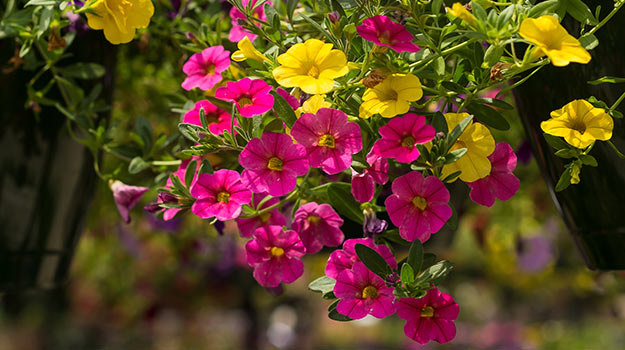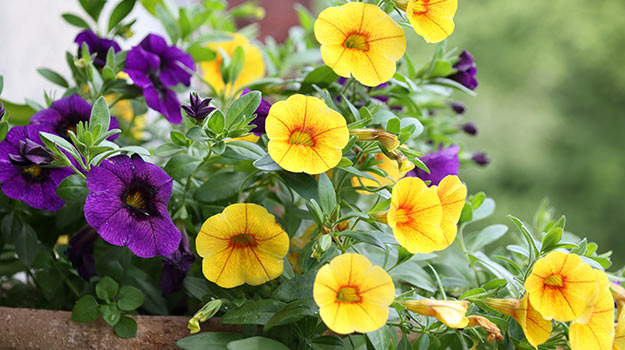
Also known as Million Bells, calibrachoa looks somewhat like bright, tiny petunias and the two plants are actually cousins. If you’ve never grown calibrachoa, you’re missing out on a real treat. The plants are easy to grow, bloom like crazy all summer and never need deadheading. Hummingbirds and butterflies love the trumpet shaped blooms.
The pretty little flowers are available in a rainbow of bright colors, including red, yellow, purple, magenta, pale pink, white, and even stripes!. Although you can plant them in the ground, calibrachoa are exceptionally beautiful in containers and hanging baskets.
Fun fact: Calibrachoa is native to South America. It is a member of the nightshade plant family, which means it is related to tobacco, tomatoes and eggplant.
Planting Calibrachoa
Most calibrachoa are hybrid cultivars that are patented, which means few seeds are available to home gardeners and the selection is limited. Don’t worry though; transplants are readily available at garden centers and nurseries.
Plant calibrachoa in containers filled with commercial potting mix, or in the ground, after all danger of frost has passed in spring. The plants need plenty of sunlight and don’t bloom well in shade.
Locate calibrachoa in well-drained soil amended with compost or manure. This is also a good time to get them off to a running start with a little slow-release, general-purpose fertilizer.

Tips on Caring for Calibrachoa
- Pinch the growing tips of young plants to promote full, bushy growth.
- Water calibrachoa slowly and deeply whenever the top 2 inches of soil feel dry to the touch. Water at the base of the plant and beware of overwatering, which can cause the plant to rot.
- Feed calibrachoa every couple of weeks, using a water-soluble fertilizer for blooming plants.
- Calibrachoa tend to be pest-resistant. However, if you notice whiteflies or aphids, keep the pests in check with insecticidal soap spray.
- Calibrachoa generally don’t need cutting back, but don’t hesitate to give them a trim if they look tired and spindly in midsummer.
5 Beautiful Calibrachoa Companions
- Sweet potato vine
- Scaevola
- Geraniums
- Salvia
- Bacopa
Here is an article on our professional website PRO-MIX GREENHOUSE GROWING that may also interest you regarding this plant's main diseases: "Growing Tough Crops: Calibrachoas"


